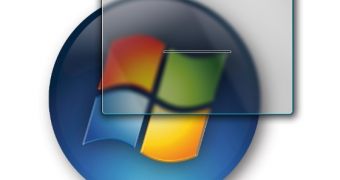Even as early as Windows 7 Milestone 1 6.1.6519.1, Microsoft hinted at the changes yet to be implemented in terms of the operating system's graphical user interface. Having reached Milestone 3 Build 6780, Windows 7 continues to sport the Windows Vista specific look and feel but, at the same time, the promise is that the graphical user interface of the next iteration of the Windows client will move past what is available today. In fact, the Redmond giant is cooking changes across the table in regard to both visual style and functionality for a number of aspects of the graphical user interface including the Start Menu, Taskband, Quick Launch, Deskbands, and Notification Area.
The sneak peek Microsoft offered of Windows 7 at the end of May 2008, courtesy of Julie Larson-Green, Corporate Vice President, Windows Experience Program Management, along with the leaked version of Windows 7 M1, delivered a taste, albeit inconsistent, of the modifications coming to the user interface. As far as the software company is concerned, a great deal of focus will be placed on redesigning the Taskbar. In this context, Chaitanya Sareen, a senior program manager on the Core User Experience team, managing not to give any specific detail, promised that the Windows 7 UI would evolve, starting with area “housing” components such as Start Menu, Taskband, Quick Launch, Deskbands, and Notifications.
“Before the team even sat down to brainstorm ideas about improving the taskbar, we all took time to first respect the UI. The taskbar is almost 15 years old, everyone uses it, people are used to it and many consider it good enough. We also recognized that if we were to improve it, we could not afford to introduce usability failures where none existed. This automatically sets a very high bar. We proceeded carefully by first looking into areas for improvement,” Sareen stated, adding that the new Windows 7 Takbar would evolve so that “customers can switch windows with increased confidence and ease. Commonly used items and tasks should be at the customer’s fingertips. Customers should always feel in control. The taskbar should have a cleaner look and feel”.
In this respect, the new Windows 7 UI is bound to feature a revamped taskbar which will be designed to perpetuate its core functionality. Users will still be able to turn to the taskbar when performing tasks such as launching and switching between applications, receiving system notifications and managing desktop content. But while the basic functionality remains in place, Microsoft is also looking to crank the UI up a notch.
With the Taskband, the portion of the Taskbar designed to centralize all the opened windows, for Vista's successor, Microsoft is working to reduce the degradation in quality of the switching process for scenarios in which the end user has to joggle with a multitude of items, making the actual applications unrecognizable. The implementation of the Search capabilities in the Start Menu has also evolved. Even with Windows 7 M1, the results returned to queries entered in the search box under the Start sphere took all the available real estate of the menu.
Quick Launch will continue to remain turned on by default with Sareen offering no clues as to how this particular component of the Taskbar will advance in Windows 7. However, the same is not valid for the Notification Area. The whispers of the Windows 7 operating system will be less loud than in Windows Vista, while delivering additional customization options to the end user. On top of it all, the Desktop Toolbars, or Deskbands, will be overhauled in order to make them more discoverable, take less space on the taskbar and ease access to items located in various places across the operating system.
“Most customers do not change the default settings, which are a simple right-click Properties away. For example, it may be interesting to note how often end-users relocate the taskbar to other regions of the screen - less than 2% of sessions have a taskbar that’s not at the bottom of the screen. We also know that some small percentage of machines accidentally relocate the taskbar and more often than not end-users have difficulty undoing such a state - though our data does not differentiate this situation. This data does not necessarily mean we would remove relocation functionality, but rather we could prioritize investments in a default horizontal taskbar over other configurations,” Sareen added.

 14 DAY TRIAL //
14 DAY TRIAL //